|
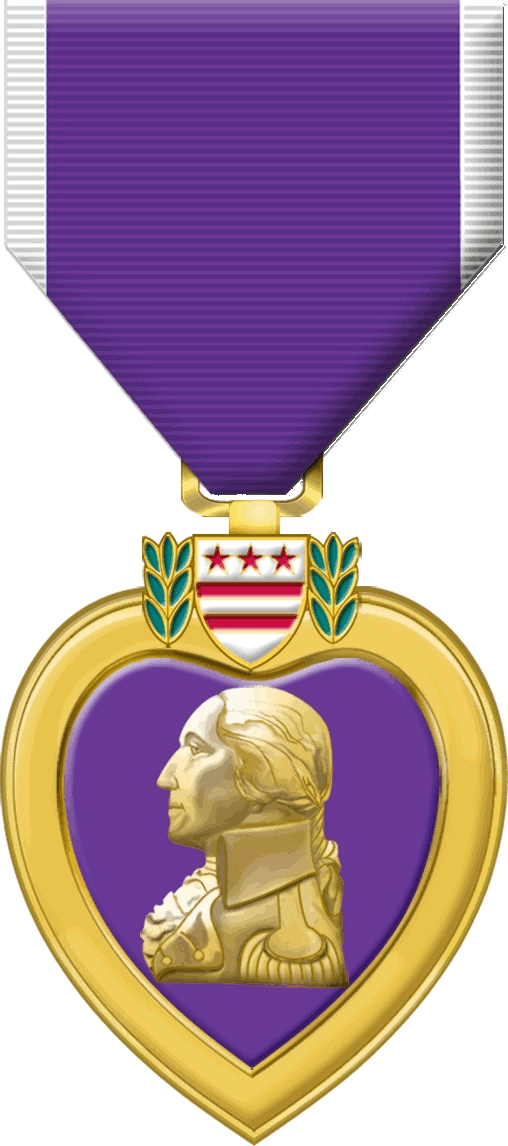
John
Storm is awarded the Purple Heart for his injuries during this mission
The Purple Heart (PH) is a United States military decoration awarded in the name of the president to those wounded or killed while serving, on or after 5 April 1917, with the U.S. military. With its forerunner, the Badge of Military Merit, which took the form of a heart made of purple cloth, the Purple Heart is the oldest military award still given to U.S. military members. The National Purple Heart Hall of Honor is located in New Windsor, New York.
The Purple Heart is awarded in the name of the president of the United States to any member of the Armed Forces of the United States who, while serving under competent authority in any capacity with one of the U.S. Armed Services after 5 April 1917, has been wounded or killed. Specific examples of services which warrant the Purple Heart include:
A any action against an enemy of the United States;
B any action with an opposing armed force of a foreign country in which the Armed Forces of the
United States are or have been engaged;
C while serving with friendly foreign forces engaged in an armed conflict against an opposing armed force in which the United States is not a belligerent party;
D as a result of an act of any such enemy or opposing armed forces; or
E as a result of an act of any hostile foreign force.
Criteria (c) and (e) were added by Executive Order 11016 on 25 April 1962, as U.S. service personnel were being sent to South Vietnam during the Vietnam War as military advisors rather than combatants. As many were being killed or wounded while serving in that capacity in South Vietnam, and because the United States was not formally a participant of the war (until 1965), there was no "enemy" to satisfy the requirement of a wound or death received "in action against an enemy". In response, President John F. Kennedy signed the executive order that awarded to any person wounded or killed "while serving with friendly foreign forces" or "as a result of action by a hostile foreign force".

After
their victory at Isandlwana on 22 January 1879 around 4,000 Zulus
pressed on to Rorke's Drift, a mission station on the Buffalo River. One
company of the 2nd Battalion 24th Regiment of Foot held them off for 12
hours. This was a welcome boost to British morale after the disaster of
Isandlwana, but it had little effect on the campaign as a whole.
Unsurprisingly, it was the defence of Rorke's Drift and the subsequent
award of 11 Victoria Crosses, rather than the defeat at Isandlwana, that
passed into British folklore.
After 28 March 1973, it may be awarded as a result of an international terrorist attack against the United States or a foreign nation friendly to the United States, recognized as such an attack by the Secretary of the Army, or jointly by the Secretaries of the separate armed services concerned if persons from more than one service are wounded in the attack. Also, it may be awarded as a result of military operations while serving outside the territory of the United States as part of a peacekeeping force.
The Purple Heart differs from most other decorations in that an individual is not "recommended" for the decoration; rather he or she is entitled to it upon meeting specific criteria. A Purple Heart is awarded for the first wound suffered under conditions indicated above, but for each subsequent award an oak leaf cluster or 5/16 inch star is worn in lieu of another medal. Not more than one award will be made for more than one wound or injury received at the same instant.
A "wound" is defined as an injury to any part of the body from an outside force or agent sustained under one or more of the conditions listed above. A physical lesion is not required; however, the wound for which the award is made must have required treatment by a medical officer and records of medical treatment for wounds or injuries received in action must have been made a matter of official record. When contemplating an award of this decoration, the key issue that commanders must take into consideration is the degree to which the enemy caused the injury. The fact that the proposed recipient was participating in direct or indirect combat operations is a necessary prerequisite, but is not sole justification for award. The Purple Heart is not awarded for non-combat injuries.
Enemy-related injuries which justify the award of the Purple Heart include: injury caused by enemy bullet, shrapnel, or other projectile created by enemy action; injury caused by enemy placed land mine, naval mine, or trap; injury caused by enemy released chemical, biological, or nuclear agent; injury caused by vehicle or aircraft accident resulting from enemy fire; and, concussion injuries caused as a result of enemy generated explosions.
Injuries or wounds which do not qualify for award of the Purple Heart include frostbite or trench foot injuries; heat stroke; food poisoning not caused by enemy agents; chemical, biological, or nuclear agents not released by the enemy; battle fatigue; disease not directly caused by enemy agents; accidents, to include explosive, aircraft, vehicular, and other accidental wounding not related to or caused by enemy action; self-inflicted wounds (e.g., a soldier accidentally or intentionally fires their own gun and the bullet strikes his or her leg), except when in the heat of battle, and not involving gross negligence; post-traumatic stress disorders; and jump injuries not caused by enemy action.
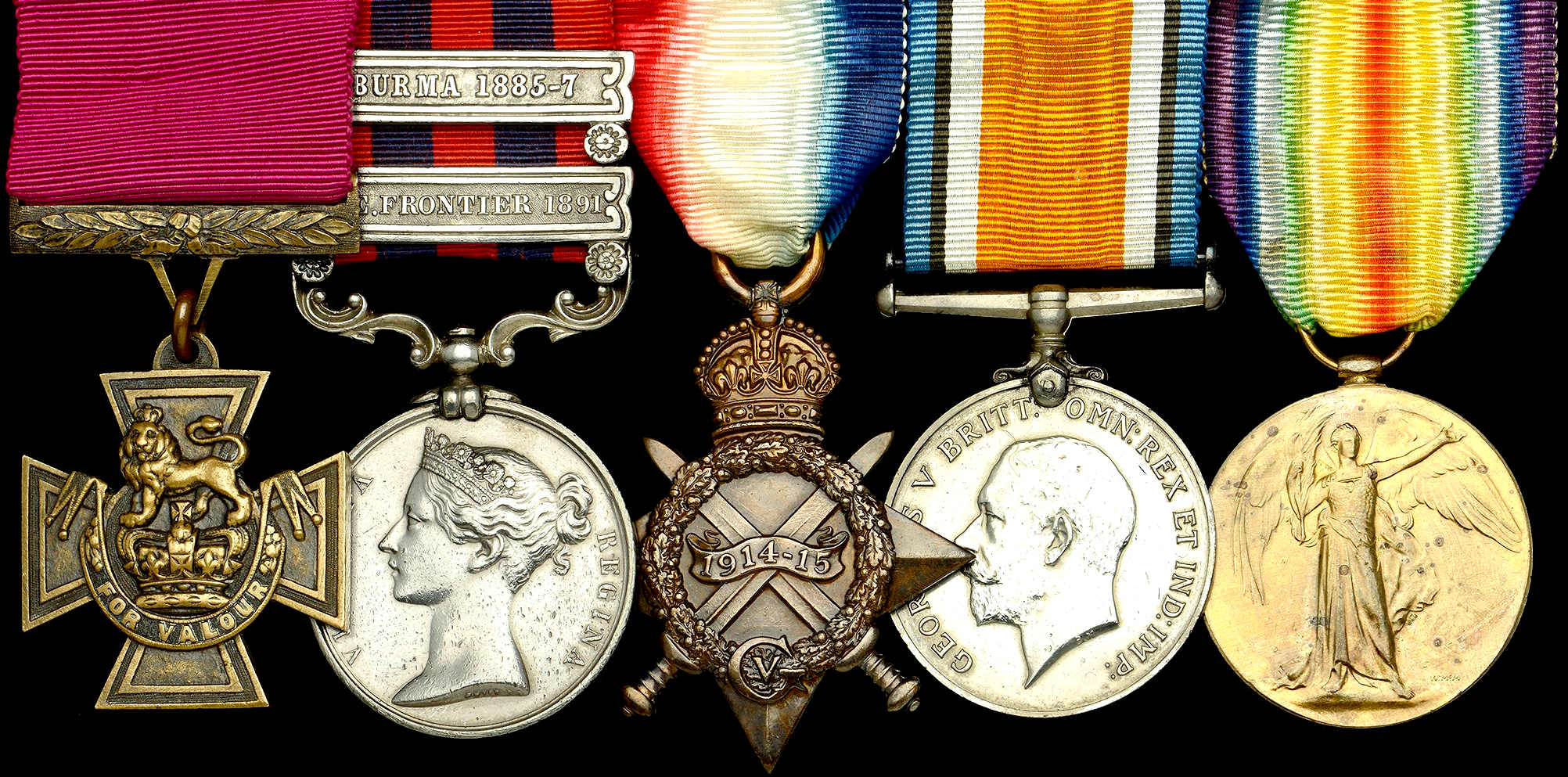
VC
and other medals of the Scotsman Colonel C J W Grant 1856 Victoria Cross
It is not intended that such a strict interpretation of the requirement for the wound or injury to be caused by direct result of hostile action be taken that it would preclude the award being made to deserving personnel. Commanders must also take into consideration the circumstances surrounding an injury, even if it appears to meet the criteria. In the case of an individual injured while making a parachute landing from an aircraft that had been brought down by enemy fire; or, an individual injured as a result of a vehicle accident caused by enemy fire, the decision will be made in favor of the individual and the award will be made. Additionally, individuals wounded or killed as a result of "friendly fire" in the "heat of battle" will be awarded the Purple Heart as long as the "friendly" projectile or agent was released with the full intent of inflicting damage or destroying enemy troops or equipment. Individuals injured as a result of their own negligence, such as by driving or walking through an unauthorized area known to have been mined or placed off limits or searching for or picking up unexploded munitions as war souvenirs, will not be awarded the Purple Heart as they clearly were not injured as a result of enemy action, but rather by their own negligence.
Animals are generally not eligible for the Purple Heart; however, there have been rare instances when animals holding military rank were honored with the award. An example includes the horse Sergeant Reckless during the Korean War, and Sergeant Stubby of the 102nd Infantry Regiment during
World War
1.
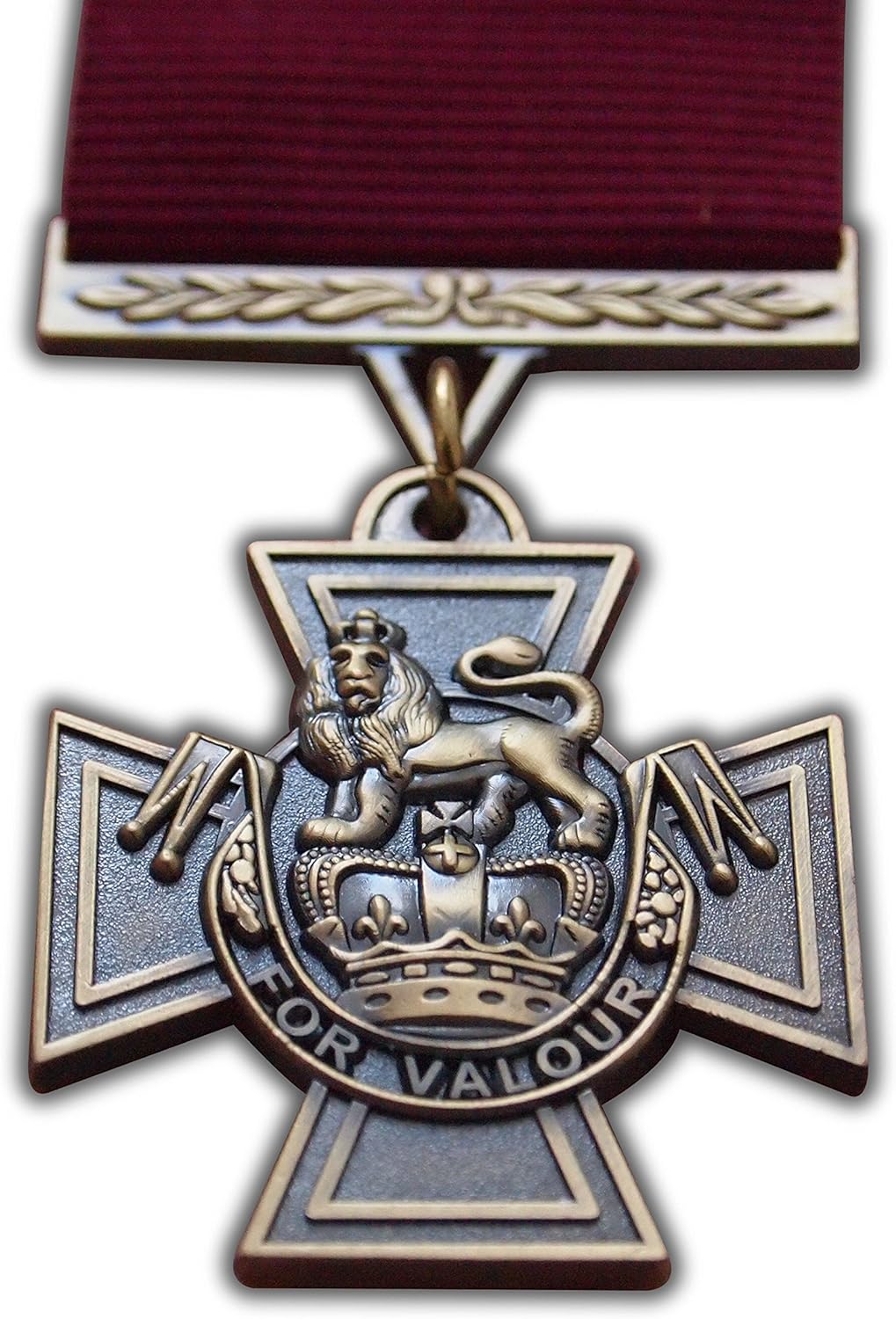
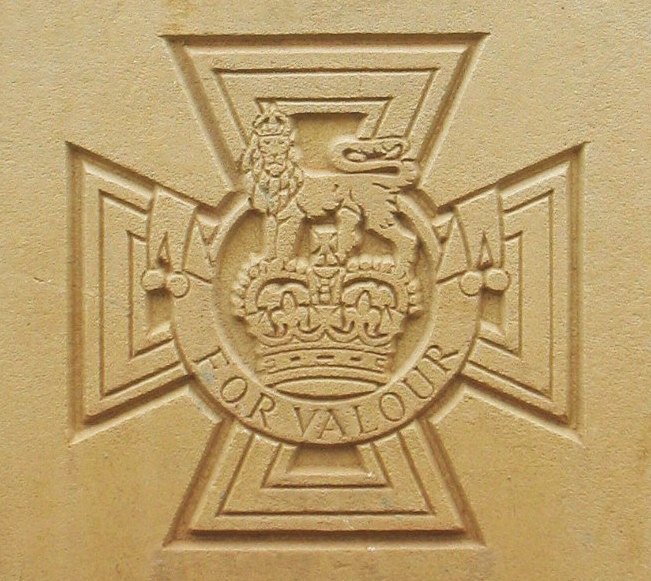
A
replica VC and the stone Victoria Cross of the Commonwealth War Graves Commission
...
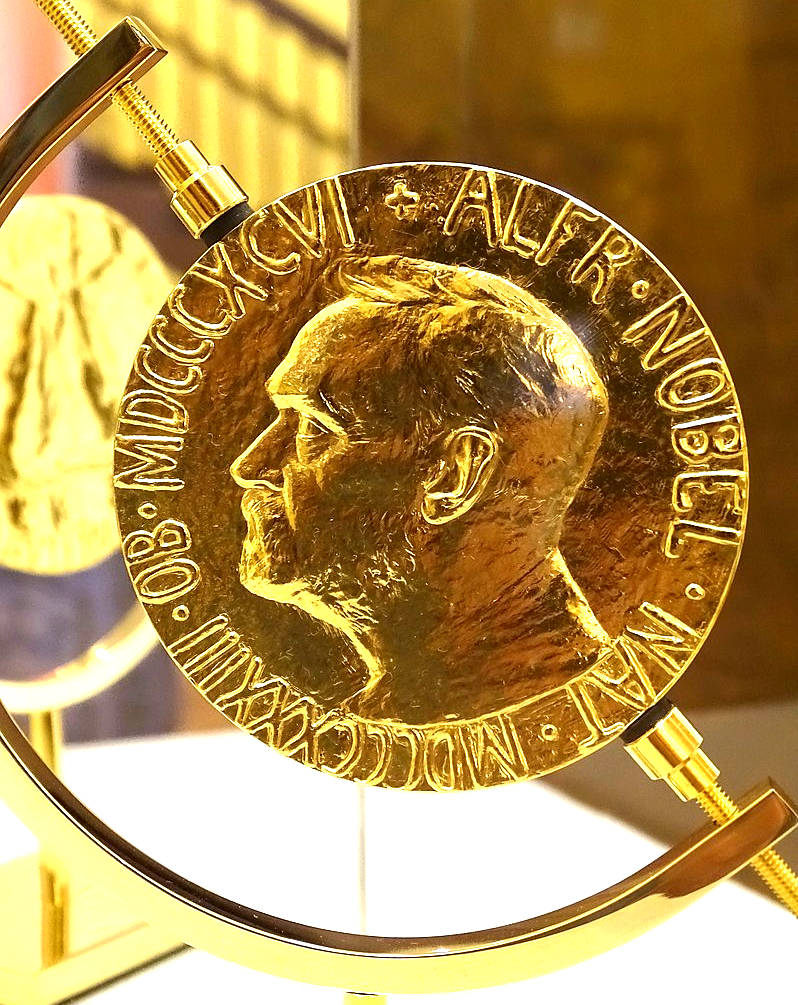
The
Nobel Peace Prize Medal 2002 - Jimmy Carter
https://www.royal.uk/the-order-of-the-garter
https://www.royal.uk/the-order-of-the-garter
https://www.nobelprize.org/
https://www.nobelprize.org/
CHAPTERS
| CHARACTERS
| MEDIA
|
MOVIE REF |
SCREENPLAYS
|





